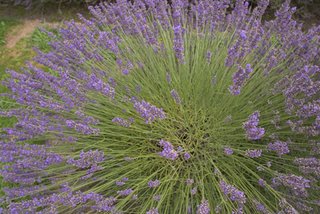Eucalyptus Oil

Botanical Name: Eucalyptus globulus
Method of Farming: Conventional
Country of Origin: Spain
Extraction: Steam distillation of the fresh or partially dried leaves and mature branches.
Characteristics: Colorless to pale yellow with a strong, fresh, camphorous odor and woody undertone.
Oil properties: Eucalyptus has a clear, sharp, fresh and very distinctive smell. It is pale yellow in color and watery in viscosity.
Origin of eucalyptus oil: The Australian Blue-gum can sometimes reaches a height of 100 meters (300 feet), making it one of the highest trees in the world. There are over 500 species of Eucalyptus trees and they have blue-green long, narrow, tough leaves, creamy white flowers and smooth pale bark.
The 'eu' and 'kalypto' means 'well' and 'covered' in Greek, referring to the cup-like membrane that covers the flower bud and is thrown off as the flower expands. The Australian Aborigines calls the Eucalyptus 'kino'. One of their uses for it was to cover serious wounds with the leaves.
Eucalyptus was introduced to Europe in 1788, and the first oil exported to England was called 'Sydney peppermint'. It was extracted from Eucalyptus peperita which is a more industrial type of oil.
The Eucalyptus uses a lot of water while growing, thus it drains land where usually malaria was found, making it a healthier climate for living.
Extraction: Eucalyptus oil is extracted from the fresh or partially dried leaves and young twigs.
Chemical composition: The main chemical components of Eucalyptus are: Camphene, Citronellal, Fenchene, Phellandrene and Cineole.
Precautions: Eucalyptus oil should be used with care and people with high blood pressure and epilepsy should avoid it. Excessive use of the oil may cause headaches.
Therapeutic properties: The therapeutic properties of Eucalyptus oil include: analgesic, anti-rheumatic, anti-neuralgic, anti-spasmodic, antiseptic, balsamic, decongestant, deodorant, diuretic, expectorant, insecticide, rubefacient and stimulant.
Uses: Eucalyptus has a cooling and deodorizing effect on the body, helping with fevers, migraine and malaria. For the respiratory tract, it helps with coughs, asthma, throat infections, sinusitis and catarrhal conditions. It soothes inflammation and eases mucus, clearing the head from the stuffiness of colds and hay fever.
Eucalyptus oil is useful as warming oil when used for muscular aches and pains, rheumatoid arthritis, sprains and poor circulation. In skin care it can be used for burns, blisters, herpes, cuts, wounds, skin infections and insect bites.
Eucalyptus oil can boost the immune system, and is helpful especially in cases of chicken pox, colds, flu and measles.
Summary: Eucalyptus oil is very helpful when used for headaches, fevers, on the respiratory tract, muscular aches and pains and in skin care. It has a soothing and calming effect on the whole body and helps with the immune system. The oil is also effective against bacteria - especially staphylococci.
Burners and vaporizers: In vapor therapy Eucalyptus oil be used for: frequent sneezing, hay fever, flu, respiratory problems and as insect repellant.
Blended massage or in the bath: Eucalyptus oil can be used in blended massage oil, or diluted in the bath to assist with: arthritis, asthma, bronchitis, mucous congestion, colds, headaches, rheumatism, sinusitis, catarrh, fatigue and muscular aches and pains.
Used neat or dab on with a bud: Eucalyptus oil can be used neat on the skin for insect bites or wounds, but care should be taken when doing so.
Gargle: Diluted Eucalyptus can be used as a gargle for a sore throat
(aromatherapy)


